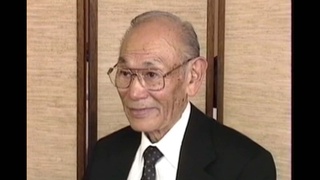Interviews
Joining the army
And because of my background, when I got drafted, of course they’d put you in the motor pool, or repairing cars and trucks. I must confess I really didn’t enjoy that. I says, “What am I doing here? I’m supposed to be in the army.” We had no military training, our jobs was simply like a civilian job. They didn’t even trust us to be on the Pacific coast. They shipped us all inland. I was in Oklahoma.
It was interesting because the local Indians would come up and run up to you and say, “Hey, hey, what tribe you from?” We were dark, suntanned like they were. And I said, “Oh we’re a southern California tribe.”
Date: January 3, 2015
Location: California, US
Interviewer: Lily Anne Y. Welty Tamai
Contributed by: Watase Media Arts Center, Japanese American National Museum







